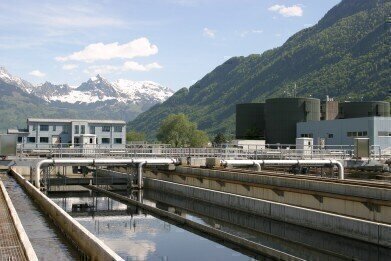Water/Wastewater
Can Graphene Improve Wastewater Treatment?
Aug 28 2020
Using graphene-wrapped particles can help to eradicate antibiotic-resistant bacteria in wastewater treatment plants, according to a new study from Rice University in Houston, Texas. The research focused on ways in which so-called superbugs, which can survive the presence of antibiotics in effluent and react with existing bacteria in reservoir environments, can be destroyed in other ways.
“Superbugs are known to breed in wastewater treatment plants and release extracellular antibiotic resistance genes (ARGs) when they are killed as the effluent is disinfected,” explained Pedro Alvarez, co-author on the study. “These ARGs are then discharged and may transform indigenous bacteria in the receiving environment, which become resistome reservoirs. Our innovation would minimize the discharge of extracellular ARGs, and thus mitigate dissemination of antibiotic resistance from wastewater treatment plants.”
Resilient bacteria
Thanks to the advancement of science and modern methods for monitoring wastewater from the wastewater network and across the sewage treatment plant, scientists first discovered the existence of the superbugs in 2013. Not only are the bacteria resistant to antibiotic treatments, but they can release ARGs into the effluent. When the ARGs come into contact with native bacteria, they can transform into undesirable contaminants.
As a result, the scientific community has been searching for a way to neutralise these superbugs for some time. Limited success had been found by placing cores of bismuth, carbon and oxygen in a sphere into the plant, which produce reactive oxygen species (ROS) that kill off the harmful bacteria. However, the efficacy of the spheres could be compromised by scavenging elements in the wastewater, while their life cycles were also undesirably short.
“Wrap, trap and zap”
The new method, pioneered by Alvarez and his colleagues, works by wrapping the sphere cores in a nitrogen-doped graphene oxide shell. The wrapping stage not only enhances the amount of ROS emitted by the spheres by as much as three times, but also diminishes the ability of ROS scavengers to affect their disinfectant abilities. What’s more, the nitrogen-doped graphene also makes the spheres more effective in capturing the bacteria and gives the cores more time to kill off any nasties.
In this way, the technique rapidly reduces risks to the microbial safety of the discharged water. Finally, the team noted that the graphene-wrapped spheres were sizable enough to be filtered out from the effluent, meaning they could be reused. After 10 cycles, they were still found to be largely as effective as they had been on the first, signalling that they could be a far more sustainable alternative than just the spheres alone. While further research into their large-scale effectiveness is now required, the Rice University research is a promising step in the right direction for wastewater treatment technology.
Digital Edition
IET 34.2 March 2024
April 2024
Gas Detection - Biogas batch fermentation system for laboratory use with automatic gas analysis in real time Water/Wastewater - Upcycling sensors for sustainable nature management - Prist...
View all digital editions
Events
Apr 22 2024 Hannover, Germany
Apr 22 2024 Marrakech, Morroco
Apr 23 2024 Kuala Lumpur, Malaysia
Apr 23 2024 Kintex, South Korea
Apr 23 2024 Edmonton, AB, Canada


















